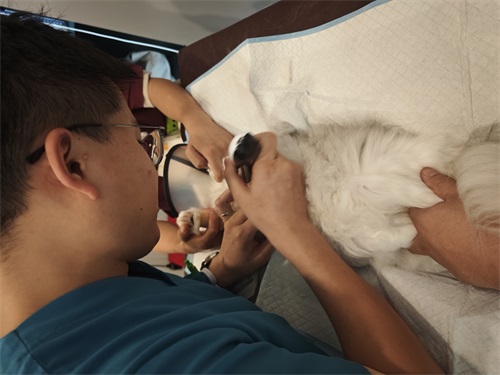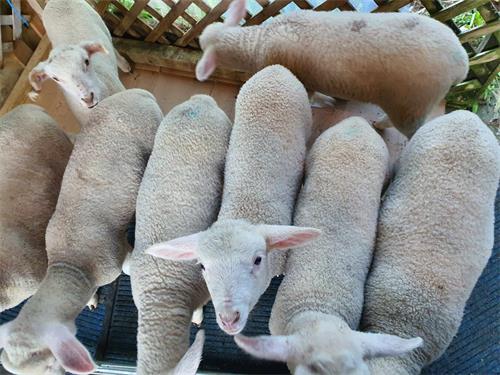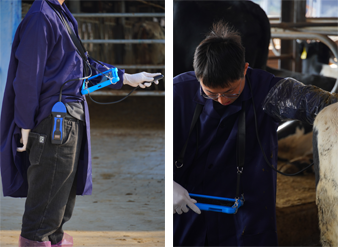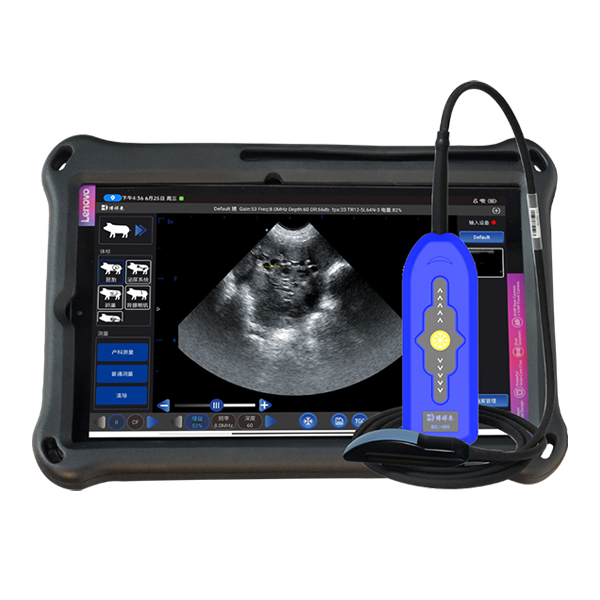As modern farming evolves, the integration of advanced diagnostic tools such as ultrasound equipment has become indispensable for effective livestock management and disease control. Ultrasound technology offers farmers and veterinarians a non-invasive, real-time imaging solution that helps diagnose, monitor, and treat a wide range of animal health conditions. Understanding how to effectively use ultrasound on the farm is crucial to enhancing animal welfare, improving productivity, and reducing economic losses caused by undetected or late-diagnosed diseases.
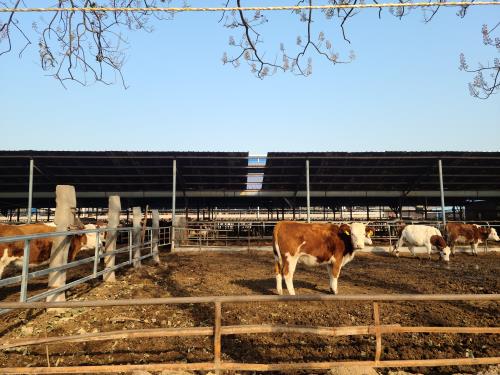
This article explores the multifaceted role of ultrasound in farm animal health, highlighting its applications in detecting common diseases, supporting reproductive management, and providing a foundation for proactive herd health strategies. The perspective is informed by veterinary practices widely adopted in Europe, North America, and Australia, where ultrasound is recognized as a cornerstone of modern animal care.
Ultrasound Technology: A Brief Overview
Ultrasound imaging works by emitting high-frequency sound waves through a transducer probe into animal tissues. These waves reflect back differently depending on tissue density and composition, creating visual images that reveal internal structures such as organs, muscles, and fluid accumulations. Because it is non-invasive, does not involve radiation, and provides instantaneous results, ultrasound is especially suited to use directly on the farm.
Veterinary ultrasound systems vary from portable handheld units ideal for fieldwork to more advanced console machines used in clinical settings. A popular portable device among farmers and vets today is the BXL-V50 Veterinary Ultrasound Scanner, known for its waterproof design, high-resolution 8-inch screen, and long battery life—making it reliable for extended field use.
Applications of Ultrasound in Diagnosing Animal Diseases on the Farm
1. Reproductive Health and Pregnancy Diagnosis
Reproductive efficiency is a cornerstone of profitable livestock farming. Ultrasound is widely used to:
Confirm pregnancy early and accurately, reducing unnecessary feed costs on non-pregnant animals.
Detect embryonic/fetal abnormalities, such as early embryonic death or developmental issues.
Monitor the uterine environment for infections like endometritis or retained placenta.
Evaluate ovarian structures to manage fertility and identify anestrus or cystic ovaries.
For example, in dairy cows, ultrasound can detect ovarian cysts, which are a common cause of infertility. Early diagnosis allows timely intervention, preventing prolonged calving intervals and economic loss. Similarly, in sheep and goats, ultrasound pregnancy scanning supports better flock management by allowing tailored nutrition and health care during gestation.
2. Detection and Monitoring of Mastitis
Mastitis, an inflammation of the mammary gland, severely impacts milk production and quality. Ultrasound imaging enables visualization of the udder’s internal tissue, revealing inflammation, abscesses, or tissue necrosis that may not be obvious externally. This precise detection aids in differentiating between clinical and subclinical mastitis, allowing targeted treatment.
Veterinarians in the U.S. often incorporate ultrasound scanning of the mammary gland alongside milk culture tests to tailor antibiotic therapies, thus promoting antimicrobial stewardship—a growing concern globally.
3. Musculoskeletal Disorders
Lameness and joint diseases are major welfare and productivity issues in farm animals. Ultrasound provides a window into soft tissue injuries, tendon and ligament lesions, joint effusions, and bone surface irregularities without requiring sedation or transport.
For example, in horses and cattle, ultrasound is used to diagnose tendonitis, bursitis, and early osteoarthritis. Early detection facilitates conservative treatment and rehabilitation, minimizing downtime and improving recovery outcomes.
4. Detecting Internal Parasites and Abdominal Conditions
Ultrasound helps identify signs of parasitic infections such as liver fluke infestations by revealing abnormal liver textures or enlarged bile ducts. It also assists in detecting abscesses, intestinal blockages, and peritonitis.
In sheep and goats, routine ultrasound screening can help monitor liver health, crucial for maintaining production in parasite-prone environments, especially in wetter climates where fluke is endemic.
5. Monitoring Organ Health and Disease Progression
Ultrasound allows assessment of vital organs such as liver, kidneys, heart, and lungs. This is particularly valuable in diagnosing chronic diseases or monitoring treatment responses.
For example, cardiologists use echocardiography (a specialized ultrasound) to diagnose heart valve abnormalities or heart failure in cattle. Similarly, lung ultrasound can identify pneumonia or pleural effusion in calves and adult cattle.
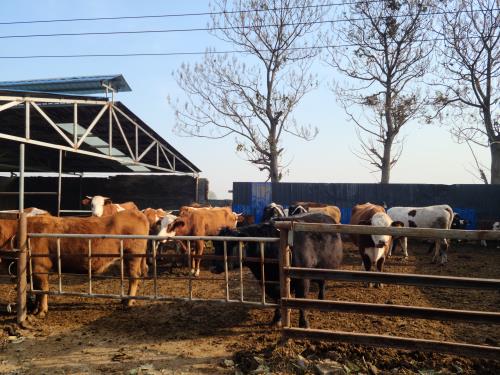
How Ultrasound Enhances Disease Management Strategies on the Farm
Improving Early Disease Detection
One of the most significant benefits of on-farm ultrasound is early detection. Many diseases in animals have subtle or no external signs initially, leading to delayed treatment. By regularly scanning at-risk animals or those showing vague symptoms, farmers can catch issues before they escalate, improving prognosis and reducing treatment costs.
Reducing Use of Antibiotics and Chemicals
Targeted diagnosis via ultrasound helps avoid indiscriminate antibiotic use, a major concern amid rising antimicrobial resistance. By precisely identifying infections or inflammations, treatments can be tailored, reducing unnecessary medication.
Enhancing Reproductive Efficiency
As reproductive diseases or abnormalities often lead to culling or long intervals between calving, ultrasound plays a vital role in maintaining herd fertility. By monitoring ovarian activity and uterine health, veterinarians can recommend timely insemination or treatment, optimizing reproductive cycles.
Facilitating Welfare-Centered Farming
Animal welfare increasingly drives consumer preferences and regulatory requirements. Ultrasound’s non-invasive nature allows repeated monitoring without distress or injury, supporting welfare-centric management practices that improve both ethics and production.
Practical Considerations for Using Ultrasound on Farms
Training and Expertise
Effective ultrasound use requires proper training. Veterinarians and technicians must understand anatomy, ultrasound physics, and image interpretation. Many countries now offer certified courses for veterinary ultrasonography, which farmers are encouraged to attend alongside their veterinary advisors.
Device Selection
Choosing the right ultrasound machine depends on the animal species, farm scale, and diagnostic needs. Portable devices like the BXL-V50 offer versatility and durability for various livestock. High-frequency probes (7.5–10 MHz) are ideal for superficial structures such as tendons and udder tissue, while lower frequencies penetrate deeper for abdominal scanning.
Hygiene and Maintenance
Maintaining probe hygiene is critical to prevent cross-contamination between animals. Most farm ultrasounds include waterproof designs for easy cleaning, but protocols must be strictly followed. Battery life and screen visibility under different lighting conditions are also important practical factors.
Case Studies: Ultrasound in Action on Modern Farms
Dairy Cattle: Managing Postpartum Uterine Infections
In a dairy herd in Wisconsin, routine postpartum ultrasound scanning identified cows with retained placentas and uterine fluid accumulation, early signs of endometritis. Early treatment based on ultrasound findings improved conception rates by 20% compared to previous years when diagnosis was based solely on clinical signs.
Sheep Flock: Early Pregnancy Detection and Nutrition Management
A sheep farmer in New Zealand uses ultrasound scanning at 30–40 days post-mating to identify pregnant ewes and litter sizes. This enables precise feeding plans that reduce feed wastage on non-pregnant ewes and improve lamb survival rates.
Beef Cattle: Diagnosing Lameness via Tendon Ultrasound
A large feedlot in Texas employs ultrasound to assess tendon injuries in lame steers. Early diagnosis leads to reduced treatment times and fewer animals culled, improving overall herd productivity.
Challenges and Future Directions
Cost and Accessibility
While prices have decreased, ultrasound equipment and training still represent significant investments for small-scale farmers, especially in developing regions. Expanding affordable, user-friendly portable devices is key to broader adoption.
Artificial Intelligence and Automation
Emerging AI-driven ultrasound systems promise to simplify image interpretation, making ultrasound more accessible to non-experts. Future integration with farm management software could offer predictive analytics for disease outbreaks and animal growth.Integration with Other Technologies
Combining ultrasound data with other monitoring tools such as wearable sensors and automated feeders can create a comprehensive health and productivity management ecosystem, pushing farm efficiency to new levels.
Conclusion
Ultrasound equipment has revolutionized veterinary diagnostics on farms, offering a safe, efficient, and versatile tool for detecting and managing animal diseases. By incorporating ultrasound into routine herd health protocols, farmers can improve reproductive success, detect diseases early, reduce antibiotic use, and enhance animal welfare.
Devices like the BXL-V50 Veterinary Ultrasound Scanner exemplify the modern balance of portability, durability, and imaging quality needed for effective farm use. As knowledge and technology continue to advance, ultrasound will only grow in importance as a cornerstone of sustainable and profitable livestock farming worldwide.
References
Whitaker, D. A., & Smith, E. (2021). Veterinary Ultrasonography in Food-Producing Animals. Journal of Veterinary Imaging. https://www.jvetimaging.org/article/veterinary-ultrasonography-food-producing-animals
Beef Cattle Institute. (2023). Use of Ultrasound for Growth Evaluation in Cattle. https://www.beefcattleinstitute.org/ultrasound-growth
American Association of Bovine Practitioners. (2020). Ultrasound for Reproductive and Disease Diagnosis in Cattle. https://www.aabp.org/ultrasound-disease-diagnosis
European College of Veterinary Diagnostic Imaging. (2019). Clinical Applications of Ultrasound in Farm Animals. https://www.ecvdi.org/clinical-applications
Boxerly Technologies. (2024). BXL-V50 Veterinary Ultrasound Scanner Product Information. https://www.bxl-vet.com/bxl-v50
link: https://www.bxlimage.com/nw/1258.html
tags:
